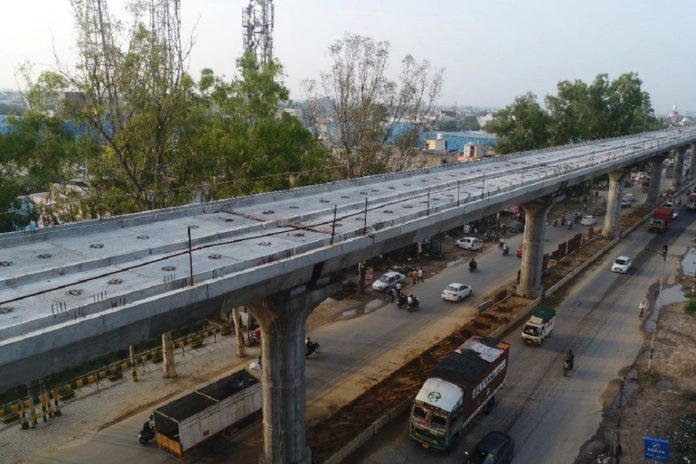Striving for the timely completion of this project NCRTC has completed 41 km of pier construction from a total of 82-km long Delhi-Ghaziabad-Meerut RRTS Corridor.
The corridor has around 70 km elevated with 12 km section underground. About 2,800 piers are to be constructed for the entire elevated section of the corridor from which around 1,700 piers have already been constructed.
The construction of the RRTS viaduct has also been completed for a 25 km long stretch of the corridor including over 16 km of the priority section. Around 24 launching gantries have been installed to date at various locations to construct the viaducts expeditiously. The construction of the viaduct on the rest of the erected piers is being carried out in full swing.
The work of laying tracks, signalling, and installation of OHE etc, is going on over the constructed viaduct. The 17-km long priority section of the Delhi-Ghaziabad-Meerut RRTS corridor has five stations, Sahibabad, Ghaziabad, Guldhar, Duhai and Duhai Depot. These stations are taking shape at a fast pace.
Duhai Depot is gearing up for the arrival of the first RRTS trainsets and preparations are being done for the operation and maintenance of the train. Soon, the trial run for the operations in the priority section will commence.
While maintaining the pace of construction, NCRTC is also taking comprehensive pollution control measures in and around construction sites. A dedicated team of experts is regularly monitoring the effectiveness of these measures and intensifying activities wherever necessary. The construction work is being done in the barricaded zones of sufficient height and thorough cleanliness is being taken care of at these sites. Anti-smog guns and water sprinklers have been installed for the disposal of construction dust. All the raw materials and debris are kept covered at their marked sites.
The Delhi-Ghaziabad-Meerut RRTS corridor is expected to reduce CO2 emissions by about 250,000 tonnes per year. RRTS will prove to be the most energy efficient futuristic transit system, ushering in a new era for seamlessly connected mega-regions and setting a new benchmark for similar projects in future.
Efforts are also being made to carry out the work in a manner to minimise inconvenience to the people due to traffic diversions. Arrangements have been made to station an adequate number of traffic marshals, providing U-turns wherever necessary and carrying out work with constant coordination with local people and government agencies concerned.
NCRTC is striving for the timely completion of this project. It is planning to commence the operation on the priority section by next year and commission the entire corridor by 2025. Once completed, people will be able to cover the distance from Delhi to Meerut in just 55 minutes.


